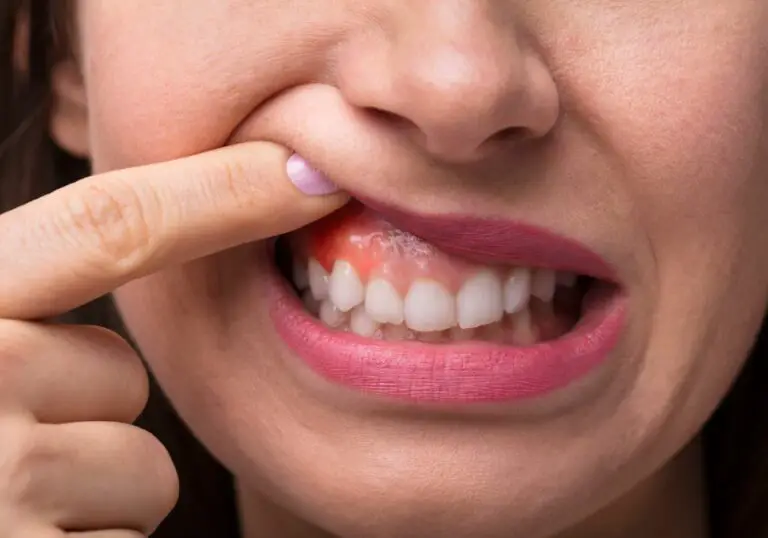If you have no teeth, you may be wondering what kind of foods you can eat. Soft foods are a great option for those who have difficulty chewing or swallowing. Soft foods are easy to eat and digest, making them a great choice for people with dental issues or other health problems that make it difficult to eat solid foods.
Soft foods can be nutritious and delicious. They can include a variety of foods such as cooked vegetables, mashed potatoes, soups, smoothies, and more. It’s important to choose foods that are soft and easy to chew, but also provide the necessary nutrients your body needs. With a little creativity and planning, you can enjoy a variety of soft foods that are both tasty and healthy.
Understanding Soft Foods

If you have no teeth, eating can be a challenge. But don’t worry, there are plenty of soft foods that are nutritious and delicious. Soft foods are foods that are easy to chew and swallow. They are often recommended for people who have dental problems, such as missing teeth, dentures, or gum disease. Soft foods are also helpful for people who have difficulty swallowing or have had surgery on their mouth or throat.
Soft foods come in different textures, from pureed to mashed to chopped. Some examples of soft foods include:
- Applesauce
- Bananas
- Avocados
- Pureed fruits
- Eggs
- Yogurt
- Cottage cheese
- Pudding
- Cooked vegetables
- Soups
- Oatmeal
- Smoothies
- Mashed potatoes
- Soft bread
- Cooked rice
When choosing soft foods, it’s important to look for foods that are high in nutrients. Soft foods that are high in protein, vitamins, and minerals can help you maintain good health. You should also choose foods that are low in sugar and fat to avoid weight gain and other health problems.
It’s also important to pay attention to the texture of the food. Some soft foods, such as cooked vegetables and soups, can be chunky or lumpy. If you have trouble swallowing, you may need to puree these foods or strain them to remove any lumps. You can also add liquid to make them smoother and easier to swallow.
In addition to soft foods, you may also want to consider using a blender or food processor to puree your food. This can make it easier to chew and swallow, and can also help you get more nutrients from your food. You can also try using a straw to drink your food, which can make it easier to swallow.
In summary, soft foods are a great option for people who have dental problems, difficulty swallowing, or have had surgery on their mouth or throat. They come in different textures and can be high in nutrients. When choosing soft foods, look for foods that are high in protein, vitamins, and minerals, and low in sugar and fat.
Benefits of Soft Foods
When you have no teeth, it can be challenging to eat your favorite foods. However, consuming soft foods has several benefits that can help you maintain a healthy diet. Here are some of the benefits of consuming soft foods:
1. Easy to Digest
Soft foods are easy to digest, which means your body does not have to work as hard to break them down. This can be especially helpful if you have digestive problems or a sensitive stomach.
2. Nutrient-Rich
Many soft foods are packed with essential vitamins and minerals that your body needs to function correctly. For example, well-cooked vegetables are soft enough to eat without teeth, and steaming them helps retain the bulk of their nutrients so you can still take advantage of what they have to offer.
3. Versatile
Soft foods can be prepared in a variety of ways, making it easy to add variety to your diet. For example, you can puree fruits and vegetables to make smoothies, or you can cook meats until they are tender and easy to chew.
4. Can Help Maintain a Healthy Weight
Soft foods are often lower in calories than harder, more substantial foods, which can help you maintain a healthy weight. However, it’s essential to ensure that you’re still getting all the nutrients your body needs.
5. Can Reduce Pain
If you have dental problems or oral pain, consuming soft foods can help reduce discomfort and make eating more comfortable.
In conclusion, consuming soft foods has several benefits for individuals who have no teeth. They are easy to digest, nutrient-rich, versatile, can help maintain a healthy weight, and can reduce pain. Incorporating soft foods into your diet can help you maintain a healthy and balanced diet.
Soft Foods for Breakfast

If you have no teeth or have difficulty chewing, it can be challenging to find foods that are both nutritious and easy to eat. Breakfast is an important meal that sets the tone for the day, so it’s essential to start your day off right with soft, easy-to-digest foods. Here are some soft food options for breakfast:
Smoothies
Smoothies are a great way to get a nutritious breakfast without having to chew. You can make them with a variety of ingredients, including fruits, vegetables, yogurt, and protein powder. Here are some ideas for soft food smoothies:
- Banana and peanut butter: Blend a ripe banana with a tablespoon of peanut butter and a cup of milk or yogurt.
- Berry smoothie: Blend a cup of mixed berries with a cup of milk or yogurt and a scoop of protein powder.
- Green smoothie: Blend a cup of spinach or kale with a banana, a cup of milk or yogurt, and a scoop of protein powder.
Oatmeal
Oatmeal is a warm and comforting breakfast option that is easy to eat and packed with nutrients. You can make it with milk or water, and you can add a variety of toppings to make it more flavorful. Here are some ideas for soft food oatmeal:
- Apple cinnamon oatmeal: Cook oatmeal with milk or water and add diced apples, cinnamon, and a drizzle of honey.
- Banana nut oatmeal: Cook oatmeal with milk or water and add sliced bananas, chopped nuts, and a sprinkle of cinnamon.
- Chocolate oatmeal: Cook oatmeal with milk or water and add cocoa powder, a drizzle of maple syrup, and a handful of berries.
In summary, soft foods can be a great option for breakfast if you have no teeth or have difficulty chewing. Smoothies and oatmeal are both nutritious and easy to eat, and you can customize them with a variety of flavors and toppings.
Soft Foods for Lunch
When it comes to mealtime, it’s important to have a variety of soft food options available. Here are a few suggestions for soft foods that you can enjoy for lunch:
Soups
Soups are an excellent choice for a soft lunch option. They can be packed with nutrients and are easy to eat. Consider trying a vegetable soup, chicken noodle soup, or tomato soup. You can also add soft vegetables like carrots, celery, and potatoes to your soup for added texture and flavor.
Mashed Potatoes
Mashed potatoes are a classic soft food and can be a great option for lunch. They are easy to make and can be seasoned to your liking. Consider adding butter, salt, and pepper for a simple yet tasty option. You can also add gravy or cheese for added flavor.
When it comes to soft foods for lunch, there are many options available. Consider trying soups or mashed potatoes for a nutritious and easy-to-eat meal. Remember to always consult with your healthcare provider or dietician to ensure that your diet is meeting your nutritional needs.
Soft Foods for Dinner
When you have no teeth, it can be challenging to eat solid foods, especially for dinner. However, there are many soft food options that are both delicious and nutritious. In this section, we will explore some soft food options for dinner, including pasta dishes and rice dishes.
Pasta Dishes
Pasta is a great option for a soft food dinner. It’s easy to cook and can be customized to your liking. Here are some soft pasta dishes you can try:
- Macaroni and cheese
- Spaghetti with tomato sauce
- Fettuccine Alfredo
- Lasagna (made with soft noodles)
- Ravioli with soft filling
When making pasta dishes, be sure to cook the noodles until they are soft and easy to chew. You can also add soft vegetables, such as cooked spinach or mashed sweet potatoes, to your pasta dishes to increase their nutritional value.
Rice Dishes
Rice is another great option for a soft food dinner. It’s easy to cook and can be paired with a variety of soft foods. Here are some soft rice dishes you can try:
- Rice pudding
- Risotto with soft vegetables (such as cooked mushrooms or peas)
- Fried rice with soft scrambled eggs
- Spanish rice with soft tomatoes and peppers
- Congee (a Chinese rice porridge)
When cooking rice dishes, be sure to cook the rice until it is soft and tender. You can also add soft proteins, such as shredded chicken or tofu, to your rice dishes to increase their nutritional value.
In conclusion, there are many soft food options for dinner that are both delicious and nutritious. By incorporating soft pasta and rice dishes into your diet, you can enjoy a satisfying meal without having to worry about chewing solid foods.
Soft Snacks

When you have no teeth, it can be difficult to find snacks that are both tasty and easy to eat. Fortunately, there are plenty of soft snacks that are perfect for people with dental issues. Here are two great options:
Yogurt
Yogurt is an excellent snack choice for anyone who can’t chew. It’s soft, creamy, and easy to swallow. Plus, it’s packed with protein and other essential nutrients. When buying yogurt, look for brands that are low in sugar and high in protein. Greek yogurt is a great option, as it has more protein than regular yogurt. You can also add fruit or granola to your yogurt for some extra flavor and texture.
Pudding
Pudding is another great snack option for people with no teeth. It’s soft, smooth, and easy to eat. Plus, it comes in a variety of flavors, so you can find one that you love. When buying pudding, look for brands that are low in sugar and high in protein. You can also make your own pudding at home using ingredients like milk, sugar, and cornstarch. Add some fruit or whipped cream to your pudding for some extra flavor and texture.
Remember, when choosing soft snacks, it’s important to look for options that are both nutritious and delicious. Don’t be afraid to experiment with different flavors and textures until you find the snacks that work best for you.
Soft Foods for Dessert
If you’re looking for a sweet treat that’s easy to eat without teeth, there are plenty of soft options to choose from. Here are two popular choices:
Ice Cream
Ice cream is a classic dessert that’s loved by people of all ages. It’s also a great option for those with no teeth, as it’s soft and easy to eat. You can enjoy it in a bowl or cone, and there are many different flavors to choose from. If you’re concerned about the sugar content, there are also low-sugar and sugar-free options available.
Jelly
Jelly is another soft dessert that’s easy to eat without teeth. It’s also a great option for those who are watching their sugar intake, as there are many sugar-free options available. You can enjoy jelly on its own, or add it to other desserts like ice cream or custard. If you’re feeling creative, you can even make your own jelly at home using fresh fruit and gelatin.
Overall, there are many soft and delicious dessert options available for those with no teeth. Whether you prefer ice cream or jelly, there’s something for everyone. Just be sure to choose options that are low in sugar and easy to eat, and you’ll be able to enjoy a sweet treat without any discomfort.
Preparation Tips for Soft Foods
When it comes to preparing soft foods for people with no teeth, there are a few things to keep in mind to ensure that the meal is both nutritious and enjoyable. Here are some tips to help you prepare soft foods that are easy to eat and delicious:
1. Cook vegetables until they are soft
Vegetables are an important part of any healthy diet, but they can be difficult to eat if you have no teeth. To make vegetables easier to eat, cook them until they are soft. Steaming is a great way to cook vegetables as it helps to retain their nutrients. Once the vegetables are cooked, you can mash or puree them until they are smooth.
2. Use a food processor or blender
A food processor or blender can be a lifesaver when it comes to preparing soft foods. These appliances can be used to puree fruits and vegetables, making them easier to eat. You can also use a food processor or blender to make smoothies, which are a great way to get all the nutrients you need in one easy-to-drink meal.
3. Add flavor with herbs and spices
Soft foods can sometimes be bland, but you can add flavor to them with herbs and spices. Rosemary, garlic, pepper, and dill are all great additions to soft foods. However, be cautious with the salt, as many seniors need to decrease their sodium intake.
4. Experiment with different textures
When making soft foods, it’s tempting to mash everything up. However, many people can still eat whole vegetables, as long as they’re soft enough. Experiment with different textures to find out what works best for you. For example, you can try pureeing some foods and leaving others whole.
5. Don’t forget about protein
Protein is an important nutrient that your body needs to stay healthy. Soft foods can sometimes be lacking in protein, so it’s important to make sure that you are getting enough. You can add protein to your soft foods by including foods like eggs, yogurt, cottage cheese, and pudding.
By following these preparation tips, you can create soft foods that are both nutritious and enjoyable to eat.
Potential Challenges and Solutions

Lack of teeth can make eating a challenge, but there are many soft foods available to help make mealtime easier. However, there are still some potential challenges that you may need to consider when planning your meals.
One challenge is getting enough nutrients. Soft foods are often low in fiber, protein, and other essential nutrients. To ensure that you are getting all the nutrients you need, it’s important to choose a variety of soft foods and to supplement your diet with nutrient-rich liquids like smoothies or protein shakes.
Another challenge is finding foods that are easy to chew and swallow. Some soft foods can still be difficult to eat if they are tough or stringy. It’s important to avoid foods that require a lot of chewing, such as tough meats or raw vegetables. Instead, choose foods that are easy to chew and swallow, such as cooked vegetables, mashed potatoes, and soft fruits.
You may also experience difficulty with digestion if you are not able to chew your food properly. Soft foods like fruit and vegetable purees, yogurt, and soup are possible to eat without putting undue stress on your jaw, but they are not intended to meet all your nutritional needs. For full nutritional value, you need to consider dentures or dental implants – then you have to actually use them.
To help make mealtime easier, you can try using a food processor or blender to puree your food. This can help make tough or stringy foods easier to eat. You can also try using sauces or gravies to add flavor and moisture to your meals.
In summary, while soft foods can help make eating easier when you have no teeth, there are still some potential challenges to consider. By choosing a variety of soft foods, supplementing your diet with nutrient-rich liquids, and using tools like food processors and sauces, you can help ensure that you are getting the nutrients you need and making mealtime a little easier.
Frequently Asked Questions
What are some soft food options for people with missing teeth?
If you have missing teeth, there are plenty of soft food options available. You can try mashed potatoes, cooked vegetables, soft fruits, soups, and pureed foods. You can also try soft grains like oatmeal and quinoa, and soft proteins like eggs and tofu.
What are some easy-to-eat foods for those without upper teeth?
If you do not have upper teeth, it can be challenging to eat certain foods. However, you can still enjoy soft foods like scrambled eggs, mashed potatoes, soups, and smoothies. You can also try soft fruits like bananas and avocados, and well-cooked vegetables like carrots and green beans.
What are some temporary soft food options for those waiting for dentures?
If you are waiting for dentures, you may need to stick to soft foods for a while. Some temporary soft food options include oatmeal, yogurt, pudding, applesauce, and mashed potatoes. You can also try smoothies and protein shakes to help you get the nutrients you need.
How can you prepare meat for someone without teeth?
If you or someone you know does not have teeth, it can be challenging to eat meat. However, you can still enjoy soft proteins like ground beef, shredded chicken, and fish. You can also try cooking meat until it is very tender and easy to chew. Slow-cooked meats like pot roast and stew are also good options.
What are some foods to avoid if you have no teeth?
If you do not have teeth, there are certain foods you should avoid. These include hard and crunchy foods like nuts, popcorn, and raw vegetables. You should also avoid tough meats and sticky foods like caramel and taffy.
What are some soft food options for those without dentures?
If you do not have dentures, you may need to stick to soft foods for a while. Some soft food options include mashed potatoes, cooked vegetables, soups, and pureed foods. You can also try soft fruits like bananas and avocados, and well-cooked grains like oatmeal and quinoa.






